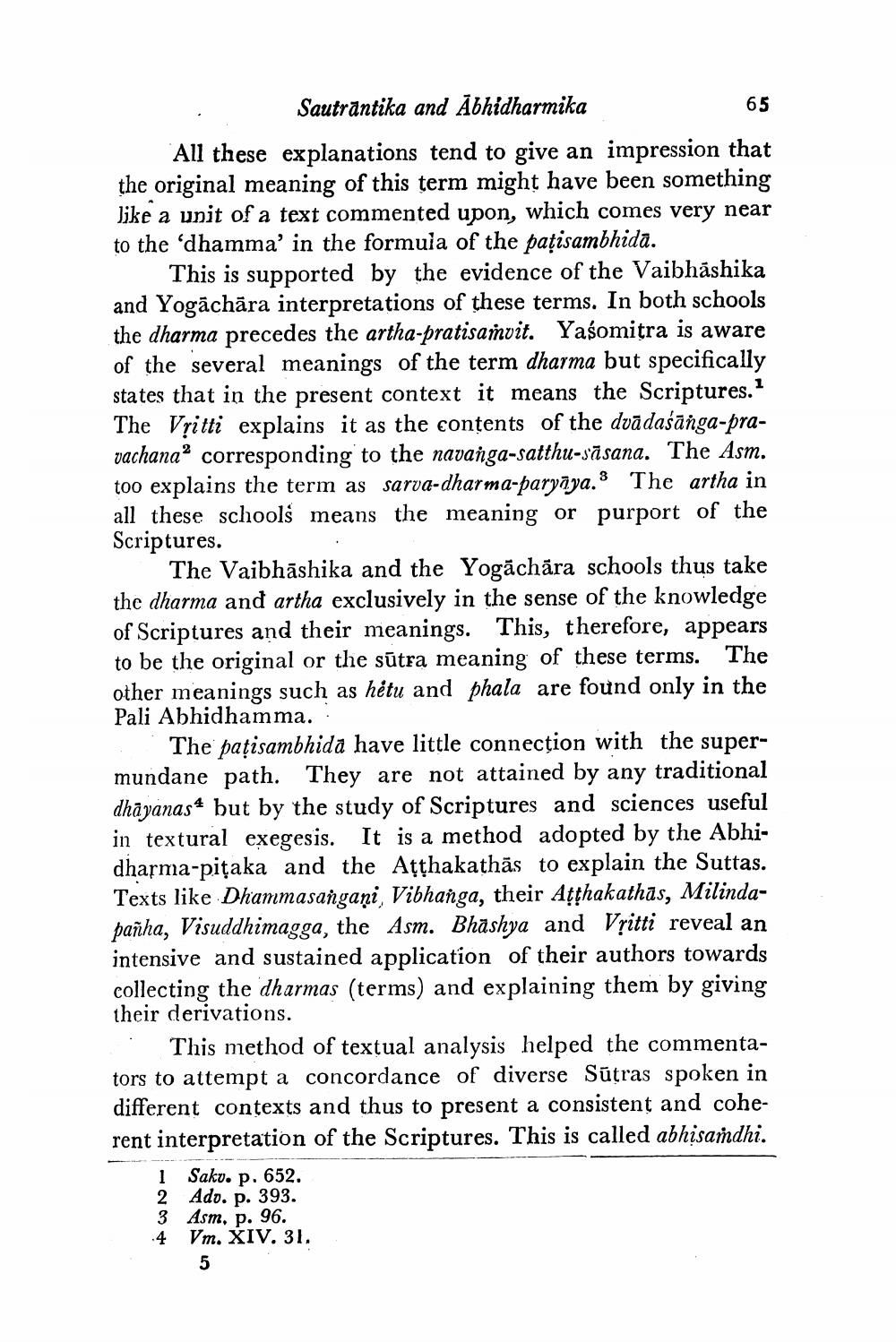________________ 65 Sautrantika and Abhidharmika All these explanations tend to give an impression that the original meaning of this term might have been something like a unit of a text commented upon, which comes very near to the 'dhamma' in the formula of the patisambhida. This is supported by the evidence of the Vaibhashika and Yogachara interpretations of these terms. In both schools the dharma precedes the artha-pratisamvit. Yasomitra is aware of the several meanings of the term dharma but specifically states that in the present context it means the Scriptures. The Vritti explains it as the contents of the dvadasanga-pravachanao corresponding to the navanga-satthu-sasana. The Asm. too explains the term as sarva-dharma-paryaya. The artha in all these schools means the meaning or purport of the Scriptures. The Vaibhashika and the Yogachara schools thus take the dharma and artha exclusively in the sense of the knowledge of Scriptures and their meanings. This, therefore, appears to be the original or the sutra meaning of these terms. The other meanings such as hetu and phala are found only in the Pali Abhidhamma. The patisambhida have little connection with the supermundane path. They are not attained by any traditional dhayanas4 but by the study of Scriptures and sciences useful in textural exegesis. It is a method adopted by the Abhidharma-pitaka and the Atthakathas to explain the Suttas. Texts like Dhammasangani, Vibhanga, their Asthakathas, Milindapanha, Visuddhimagga, the Asm. Bhashya and Vritti reveal an intensive and sustained application of their authors towards collecting the dharmas (terms) and explaining them by giving their derivations. This method of textual analysis helped the commentators to attempt a concordance of diverse Sutras spoken in different contexts and thus to present a consistent and coherent interpretation of the Scriptures. This is called abhisandhi. 1 Saku. p. 652. 2 Ado. p. 393. 3 Asm. p. 96. 4 Vm. XIV. 31.




